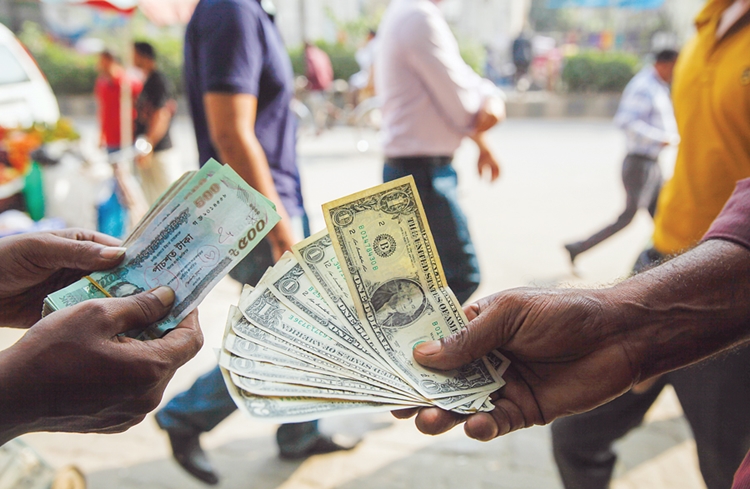SAM
Published:2020-02-20 00:23:54 BdST
Fitch forecasts Taka depreciation this year
FT ONLINE
The taka could weaken this year and the next, a forecast by Fitch Solutions Macro Research that can make exporters and remitters smile.
According to Fitch's forecasts released this month, the taka is expected to weaken to an average of Tk86 per US dollar by the end of the current year and Tk88 per US dollar by next year, up from an average of Tk84.92 per US dollar in 2019.
"We maintain our view that the Bangladesh Bank is likely to favour a weaker taka to support its export competitiveness and also remittance inflow to boost private consumption in a bid to help achieve 8.2 percent GDP growth," said Fitch, one of the top three global rating agencies.
Government data show that in the first seven months till January of the current fiscal year Bangladesh has recorded a total contraction of 5.2 percent year-on-year.
The most worrying issue is that apparel export, which accounts for about 85 percent of total exports, has declined by 5.7 percent year-on-year.
Though inflow of remittances was a whopping 19 percent year-on-year in 2019, riding on the government's 2 percent cash incentives, the inflow may be at risk this year because of weak oil prices, according to the report.
Fitch forecasts oil prices to go down to an average of $62 a barrel from $64.20 last year, which may impact the economic growth outlook in the Middle East that accounted for 57 percent of Bangladesh's total remittance inflows.
"Therefore, we expect the central bank (Bangladesh Bank) to favour a weaker taka to support remittance inflows so as to provide support to growth," said the report in its short-term outlook for Bangladesh.
However, the rating agency maintains its view that a sharp depreciation is unlikely given the potential for a spike in inflation, which has already breached the central bank's 5.5 percent limit at 5.7 percent year-on-year in December last and 5.6 percent in January this year on the back of high food inflation.
A weaker currency would worsen existing inflationary pressure stoked by food segment, in addition to rising utility costs, still-high transport inflation and inflation in the "goods and various services" category in the consumer price index basket, forecasts Fitch.
Over the longer term (6 to 24 months), Fitch maintains its view for both the taka's overvaluation in real effective exchange rate terms and Bangladesh's persistent, structurally higher inflation relative to the US to put depreciatory pressure on the unit.
"Accordingly, we forecast for the unit to average Tk88 a dollar in 2021," it says.
The growing coronavirus outbreak will weigh heavily on growth, particularly in the Asia region and this could see demand for Bangladeshi exports and labour ease even more than Fitch expects, prompting the Bangladesh Bank to weaken the taka by a larger extent.
The Bangladesh Garment Manufacturers and Exporters Association (BGMEA) has been demanding a devaluation of the taka for over a year as it said businessmen are losing their competitiveness to countries like Vietnam, India and Pakistan, which have depreciated their respective currencies significantly in the last two years.
Unauthorized use or reproduction of The Finance Today content for commercial purposes is strictly prohibited.


